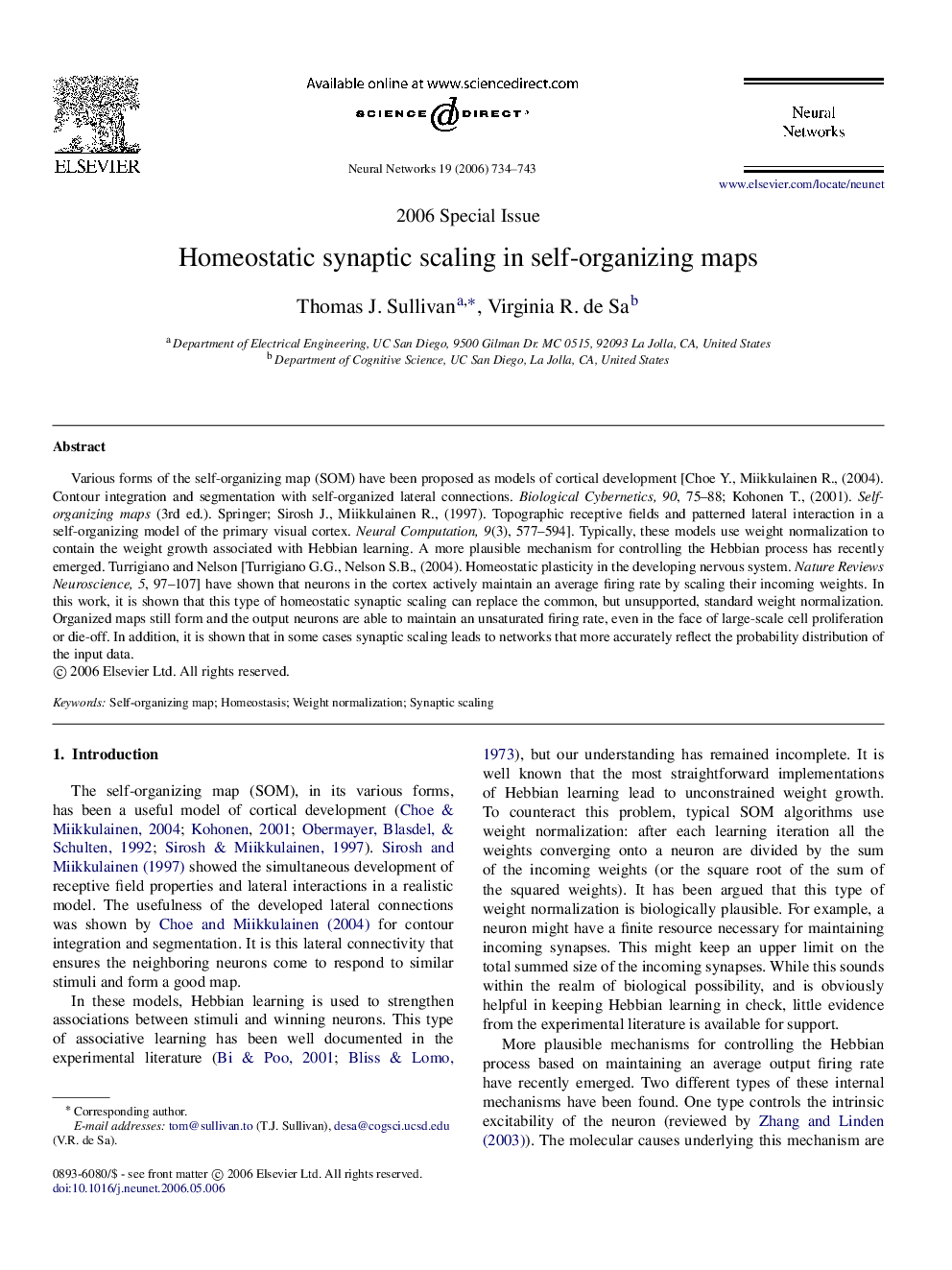| Article ID | Journal | Published Year | Pages | File Type |
|---|---|---|---|---|
| 404993 | Neural Networks | 2006 | 10 Pages |
Various forms of the self-organizing map (SOM) have been proposed as models of cortical development [Choe Y., Miikkulainen R., (2004). Contour integration and segmentation with self-organized lateral connections. Biological Cybernetics, 90, 75–88; Kohonen T., (2001). Self-organizing maps (3rd ed.). Springer; Sirosh J., Miikkulainen R., (1997). Topographic receptive fields and patterned lateral interaction in a self-organizing model of the primary visual cortex. Neural Computation, 9(3), 577–594]. Typically, these models use weight normalization to contain the weight growth associated with Hebbian learning. A more plausible mechanism for controlling the Hebbian process has recently emerged. Turrigiano and Nelson [Turrigiano G.G., Nelson S.B., (2004). Homeostatic plasticity in the developing nervous system. Nature Reviews Neuroscience, 5, 97–107] have shown that neurons in the cortex actively maintain an average firing rate by scaling their incoming weights. In this work, it is shown that this type of homeostatic synaptic scaling can replace the common, but unsupported, standard weight normalization. Organized maps still form and the output neurons are able to maintain an unsaturated firing rate, even in the face of large-scale cell proliferation or die-off. In addition, it is shown that in some cases synaptic scaling leads to networks that more accurately reflect the probability distribution of the input data.
